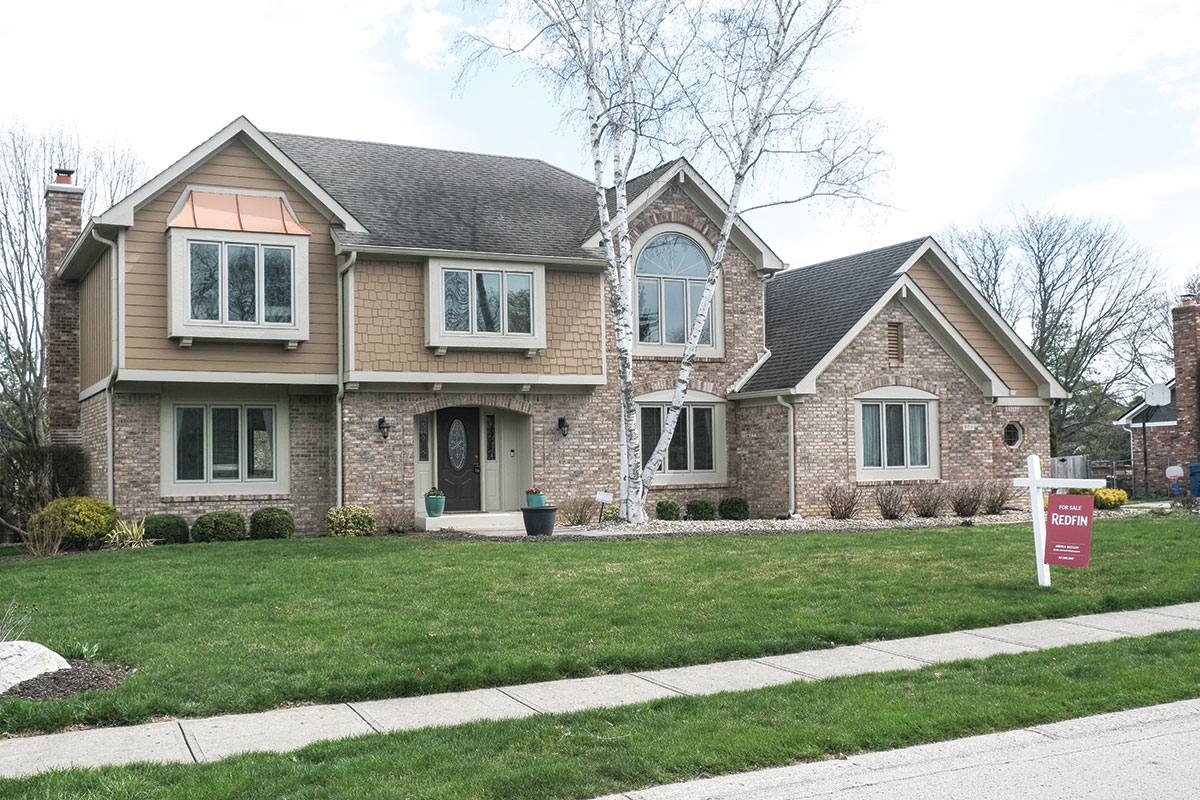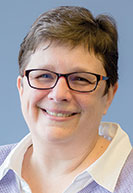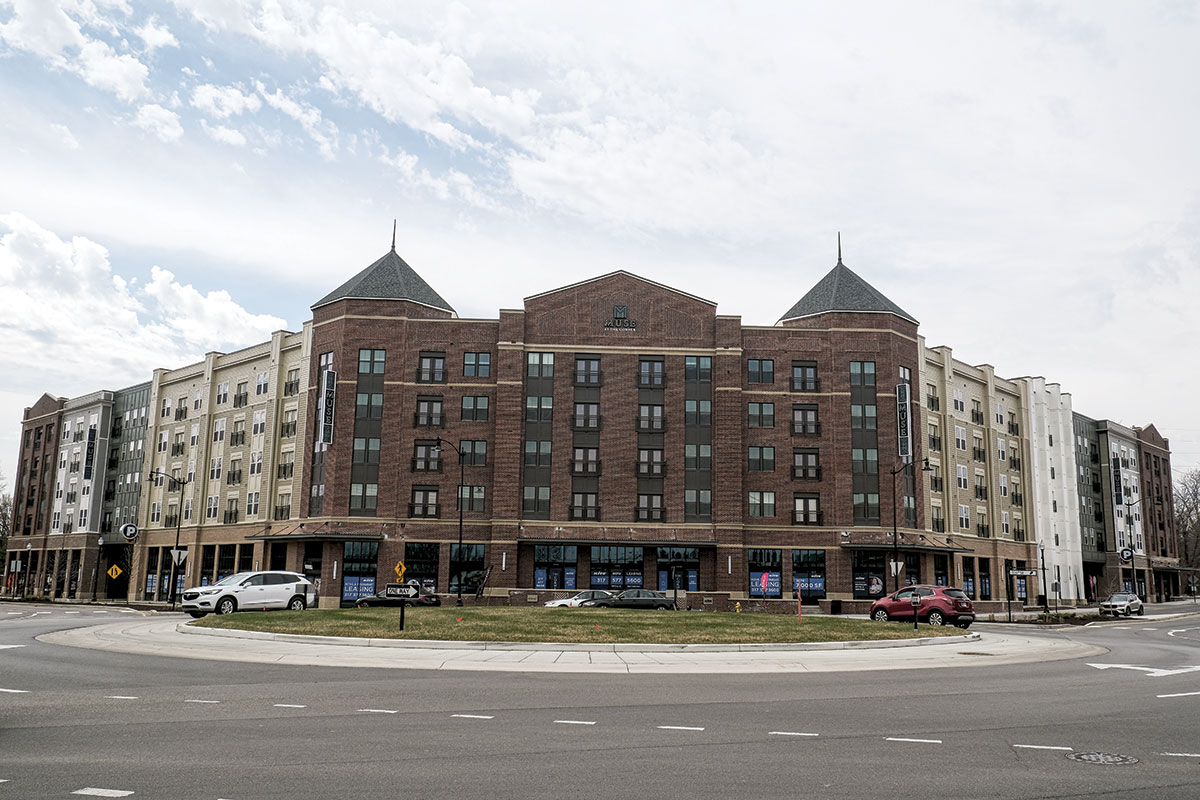Subscriber Benefit
As a subscriber you can listen to articles at work, in the car, or while you work out. Subscribe Now
Carmel’s housing construction has mostly fit into two opposite categories during its quarter-century of rapid growth: single-family detached houses in subdivisions and multifamily apartment buildings in the downtown core.

But as housing prices soar and supply lags, city officials and residents say Carmel lacks enough for-sale housing to accommodate two groups of people who don’t like either of the current housing options: empty-nesters looking to downsize and younger people wanting to move into the city.
A nine-member housing task force formed by Mayor Sue Finkam has put a focus in its first month on examining a broad third category of housing called the “missing middle.”
Missing-middle housing includes duplexes, cottages, stacked triplexes, fourplexes, multiplexes with five to 12 dwelling units and courtyard buildings. They typically have one or two bedrooms rather than three or four. Proponents of missing-middle housing say it increases density and walkability in neighborhoods.
The phrase “missing middle” was first coined in 2010 by Daniel Parolek, founder of Berkeley, California-based urban design firm Opticos Design.

Chris Pryor, government relations director for the MIBOR Realtor Association, pointed to some older residential areas in Indianapolis, such as Broad Ripple and Meridian-Kessler, as places where missing-middle housing types like duplexes and multiplexes were constructed in the early 20th century alongside single-family houses.
Other forms of missing-middle housing built a century ago are rowhouses in places like Baltimore, New York City’s Brooklyn, Chicago and Washington, D.C., and bungalow courts in Southern California.
“Those were developed before we changed all of our zoning across the country to mostly single-family-only zoning,” Pryor said.
Single-family-housing zoning became popular in the United States after World War II with the introduction of suburbs.
“Most of our younger communities like Carmel and Fishers and others were developed with single-family-only zoning,” Pryor said, “and so you have just repeated single-family-only subdivisions one after the other.”
Missing-middle housing can be difficult to develop because a few residents usually balk, he said.
Pryor, a member of the Carmel Housing Task Force, admitted he created a stir when he said at the group’s February meeting that a “small, vocal minority” stands in the way of housing that is desired by the larger community.
He told IBJ that although many people want a variety of housing options, “whenever they get proposed, nearby residents show up and object to them, and we never are able to get there and achieve what people say they actually want.”
“We need to listen to those individuals [who object], but we also need to listen to what the public is saying they want to see,” Pryor said.
Several Carmel residents objected to Pryor’s sentiment in letters to the city and in public comment at the task force’s most recent meeting.
Tammy Collins wrote in a letter that some task force members “are not thinking about what is in the best interest of the current homeowners and taxpayers of Carmel but rather the best interest of the builders and developers.”
“Carmel is not obligated to provide housing to everyone who thinks Carmel is nice and wants to live here, and it is not obligated to provide a pathway to enrich the builders,” Collins wrote. “The builders can design according to the requirements set up by the city. If they don’t want to, they can build somewhere else.”
Forming the task force
Finkam represented Carmel’s Northeast District from 2013 to 2023 on the City Council. She heard from residents who said they wanted to downsize into housing—including flats and town houses—that is not widely available in Carmel.
“A lot of my residents were 20- and 30-year tenured residents who wanted to stay but couldn’t find anything,” Finkam said. “I’ve heard that for the last eight years.”
She also heard from business leaders who said a lack of housing made it difficult to find and retain employees.
One of Finkam’s first moves as mayor was to establish the Carmel Housing Task Force to examine the city’s housing challenges. Finkam, who succeeded seven-term Mayor Jim Brainard in January, said this is the first time Carmel has taken a comprehensive look at the issue.
Members of the task force are Pryor, City Council member Adam Aasen, Redevelopment Commission member Dave Bowers, resident Barbara Eden, Carmel Clay Schools Director of Facilities Todd Fenoglio, Merchants Capital Senior Vice President of Originations Matt Kaercher, OneZone Chamber of Commerce CEO Jack Russell, HAND Inc. Board Vice President Aletta Sanders and Plan Commission member Christine Zoccola.
The group will meet monthly through June before delivering a draft report to Finkam on July 25. Upcoming meetings will focus on Carmel’s single-family market (April 25); its multifamily market (May 23); and housing-for-all approaches, plus a look at peer cities (June 27).
Finkam said the task force’s goals will be to develop a better understanding of Carmel’s housing situation and a framework the city can use to make policy decisions.
“Because this was such a widespread concern of our constituency, we wanted to get the ball rolling quickly,” Finkam said.
Supply shortage
Carmel’s population has increased since 1996 from about 30,000 residents to more than 100,000. The city has more than 130 corporate headquarters, and its downtown includes the Arts & Design District, Midtown and City Center.
As the city has grown, it has become one of the most desirable—and expensive—places to live in central Indiana.
In February, the median for-sale price for housing in Carmel was $537,500—and $584,250 for a single-family house, according to Redfin. The average monthly rent for an apartment last year in Carmel was $1,583.
Only Zionsville has higher housing costs in the metropolitan area. The median housing price last month in the Boone County town was $557,694; it was $662,500 for a single-family house. Average monthly rent for an apartment was nearly $1,700.
At the task force’s meeting in March, Carmel resident Jeff Chandler said he moved to Midtown last June. He said he would like to move out of his apartment, but he cannot find the appropriate size of house to buy.
“I can tell you everything that you’re talking about, about the missing middle, is there because we can’t get out of our rental to find a home,” Chandler said. “The consideration I would ask for you to think about and from my experience is that the one- and two-bedroom approach is very important because the transition from rental to that type of product is an easy transition.”
Pryor said people have different housing needs and those needs change throughout their lifetime.
“And, so, we need to think about our community from a standpoint of trying to meet those various needs because people are at all ends of the spectrum,” he said.

The housing supply nationwide has been low since the downturn in the late 2000s when new construction took a hit, he said, which has left many cities with limited options for people ready to make a change.
“We’ve been underbuilding ever since that time and haven’t been able to catch up, and so that’s caused a big challenge,” Pryor said.
Andrea Davis, executive director of HAND Inc., which provides affordable rental housing in Hamilton County, said one reason to broaden the types of housing constructed is to give people the opportunity to live in the same area throughout their lives.
“It’s not, ‘Oh, I’ve got to live in Kokomo and then earn my stripes to move down to Fishers and then maybe I’ll eventually get to move to Carmel,’” Davis said. “People should be able to live in our communities throughout their pathway, and we need to have housing at different price points so that they can do that.”

Finkam plans to look at workforce housing as a way for the city’s teachers, first responders, and retail and restaurant employees to be able to afford to live in Carmel.
“We have to have a comprehensive offering of housing types for us to be a successful and growing city,” she said.
Russell, the OneZone CEO, said it is important for him to be a business voice on the task force to get insight and knowledge that he can bring back to the chamber’s membership. He said good housing options lead not just to business attraction but also to business retention and expansion.
“We’re the ones that are doing the hiring; we’re the ones that are bringing in the talent. And these people that are bringing the talent, they need a place to live,” Russell said.

Finding the missing middle
A $300 million residential and retail development east of downtown Carmel could be a start in addressing some of the city’s missing-middle housing needs.
Indianapolis-based Buckingham Properties LLC is looking to redevelop areas between East 126th Street and East Carmel Drive, west of Keystone Parkway, for the Gramercy/Carmel Marketplace project. The project would involve redeveloping the existing Gramercy apartment complex and Carmel Marketplace retail center.
The plan would feature nearly 1,000 new residential units, 587 parking spaces, 28,000 square feet of retail and two public plazas. Four of the existing Gramercy apartment buildings would be renovated.
Gramercy would be built in three phases, with the first phase starting next year and second- and third-phase construction beginning in 2026. Plans call for 342 new garden-style apartments lining Kinzer Avenue, 64 renovated apartments, 167 for-sale town houses and 24 for-sale condominiums. The project would also feature a 2-acre plaza, 71 parking spaces and 8,000 square feet of retail space.
The Carmel Marketplace section of the project would be built in two phases, with the first phase starting next year and the second in 2028. Plans call for 260 apartments, 105 age-restricted apartments, 40 for-sale town houses, 20,000 square feet of retail space, a 516-car public parking garage and a public plaza about the size of 14,000-square-foot Midtown Plaza.
The Carmel Marketplace plan has 246 fewer apartments now than a design released in December and adds the town houses and age-restricted apartments.
In December, Carmel City Council members voted to delay discussion on Gramercy/Carmel Marketplace until after the new year. And in January, the project was delayed again to give Finkam’s administration more time to study the plans, consider feedback from residents and negotiate with developers.
“We intentionally pulled that back and had conversations with the developer saying we want to see something different,” Finkam said. “What you have seen with Gramercy and the conversations we’re having with the CRC is: ‘Bring us less rental and more for-sale units that are still multifamily, which is what people want.’”•
Please enable JavaScript to view this content.

“As the city has grown, it has become one of the most desirable—and expensive—places to live in central Indiana.” Shouldn’t the sentence really be: The city has grown because it has been one of the most desirable places to live despite being one of the most expensive during this sustained period of growth.
While I appreciate the housing task force, I don’t believe tenants are well represented on this body. Almost all are politicians, realtors, one identified as a “Carmel resident” is an interior designer. My Googling shows that 25% of Carmel rents, yet I would be surprised if there is a single renter among this committee.
Mayor Finkam is in pursuit of our life savings by lowing the value/price of our homes. Think supply and demand. It’s just that simple. Increase supply and prices drop. Carmel homeowners built this town. Literally. We built these desirable homes and paid the taxes to build the city. We paid the price to get here. Everyone else should pay up too. We want the price of houses to go up. Not down. We don’t care about what developers want. We don’t care that outsiders want in at a bargain price. At our expense. We see no benefit for the majority of Carmel’s citizens. Maybe, collectively, we made a mistake in last year’s primary election. We’ll soon find out. The next primary is not too far off.
This statement sums up Carmel being Carmel. It’s sad that all the “peasants” that cater to the Carmel elite can’t afford to live in the city in which they work. Not in my backyard!!!
Brian N.; jealousy is one of the seven deadly sins.
Brian N: There’s always something we each cannot afford. If I worked in Martha’s Vineyard, Massachusetts, I could not afford to live there. That’s on me. Not them.
I find it odd that empty nesters want to move to townhomes. It is difficult to carry groceries, luggage, etc up so many stairs. And selling a normal house in Carmel to buy into one of the 55+ neighborhoods makes no sense – people will pay more for much less. Not sure this is heading in the right direction.